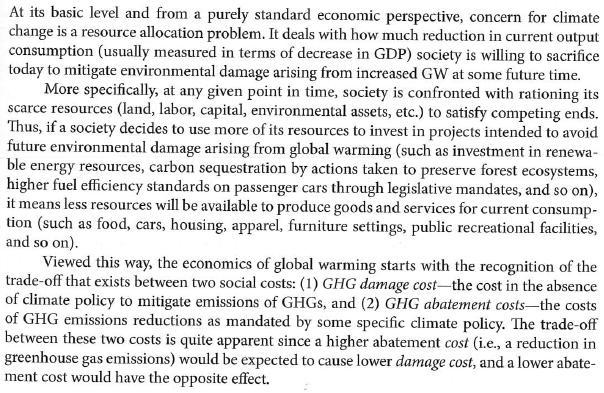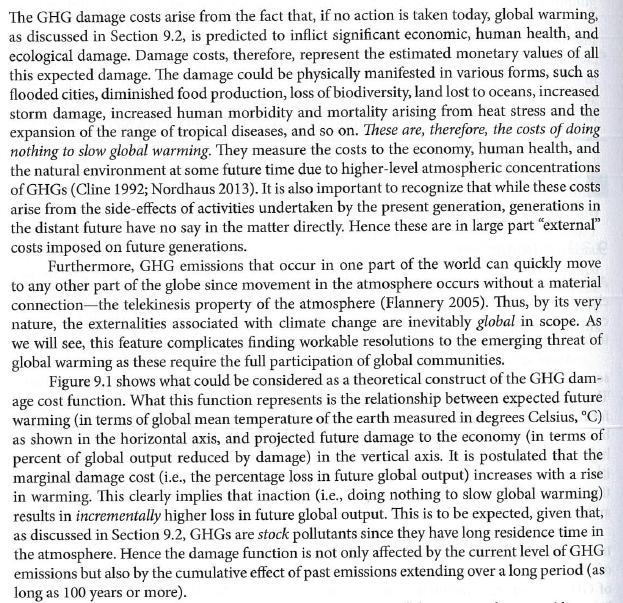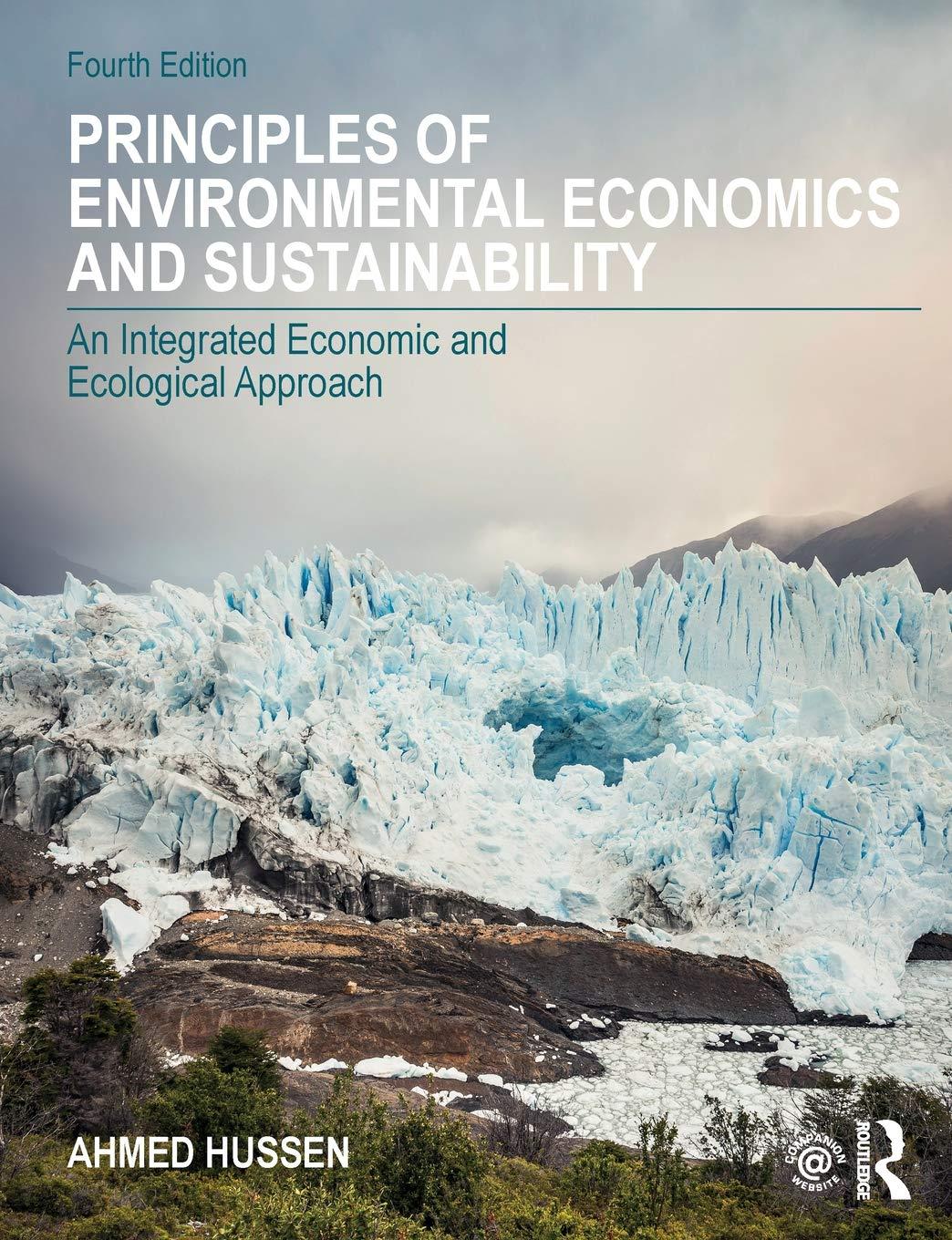In Section 9. 3, two economic approaches on what to do to slow global warming are presented.
Question:
In Section 9. 3, two economic approaches on what to do to slow global warming are presented. An advocate of one approach operates on the premise that, given our current understanding of the science of climate change, global warming is unlikely to be catastrophic to the extent of reducing world income sharply below today's levels by the turn of the 21st century. Hence a drastic cut in GHG emissions may not be needed right away. Instead, what should be implemented is a modest reduction in emissions in the near term with a gradual tightening of GHG emissions through increased carbon taxes as the scientific evidence for increased GW becomes more evident. Here is how Nordhaus (2007), the leading advocate of this policy approach, defended this particular position: "while the findings of such mainstream economic assessments may not satisfy the most ardent environmentalists, if followed, they would go far beyond current global emissions reductions and would be a good first step on a journey of many miles."
Another group of economists has a different view on the matter. This group bases its policy decision on the precautionary principle, where the focus is on prudence and not efficiency as such. This is done, among others, by a deliberate choice to use a very low discount rate on the estimation of future climate damage costs. The effect of this will be to account for the uncertain but still possible irreversible future global warming damage If you are asked to take a position, which of the above two approaches to climate policy makes sense to you? Make sure to defend your position with a good demonstration of the concepts and facts you have learned from reading Chapter 9.
Data from Section 9.3



Step by Step Answer:

Principles Of Environmental Economics And Sustainability
ISBN: 9780815363545
4th Edition
Authors: Ahmed Hussen





